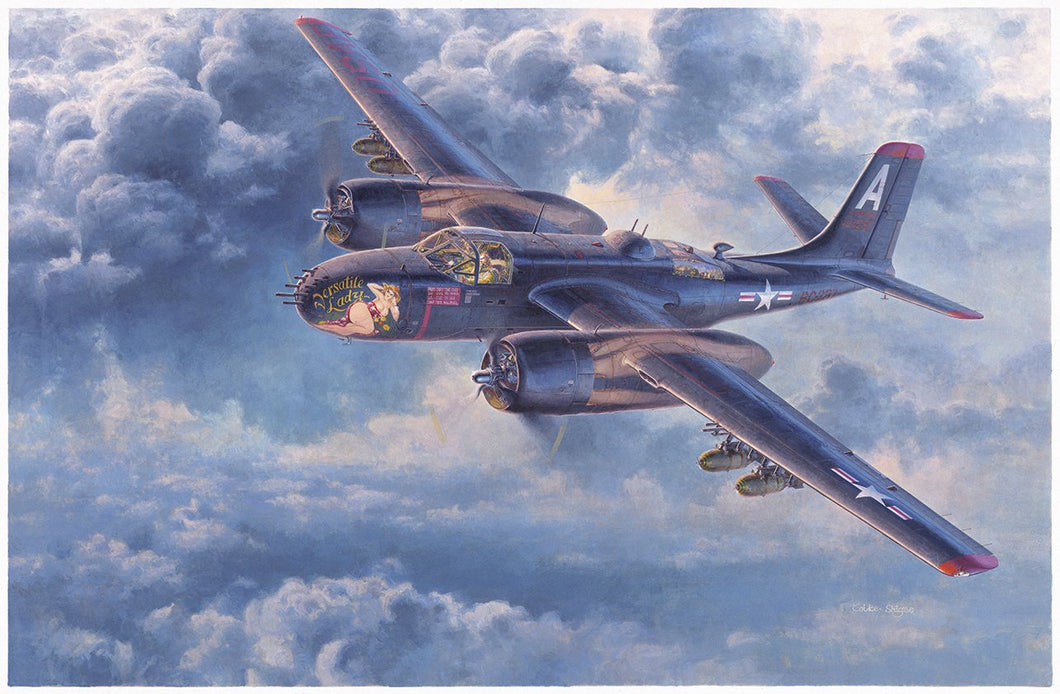In the annals of military aviation history, few aircraft have had the lasting impact and versatility of the Douglas A-26 Invader. Known for its rugged design, impressive speed, and lethal firepower, the A-26 became a vital asset in multiple theaters of war, earning its place as one of the most successful attack bombers of the 20th century.
Origins and Design
The A-26 Invader was conceived during World War II, at a time when the United States was in dire need of a fast, durable, and powerful aircraft that could serve both as a bomber and an attack plane. Douglas Aircraft Company rose to the challenge, and in 1942, the A-26 took to the skies for the first time.
Designed by the legendary Ed Heinemann, the A-26 featured a sleek, twin-engine design with a crew of three: a pilot, navigator, and gunner. Its modular design allowed it to be easily adapted for various missions, from bombing runs to low-altitude strafing. The A-26 could carry a substantial payload of bombs, rockets, and machine guns, making it a formidable force in the air.
Combat Performance
The A-26 Invader made its combat debut in 1944 during the European Theater of World War II. It quickly proved its worth, conducting precision bombing missions against German targets, destroying bridges, railways, and enemy positions with devastating accuracy. The aircraft’s speed and maneuverability allowed it to evade enemy fighters and anti-aircraft fire, making it one of the most feared bombers of the war.
One of the A-26’s most remarkable attributes was its versatility. The aircraft could be configured with different nose sections—either a glass nose for bombardiers or a solid nose packed with .50 caliber machine guns for ground attacks. This adaptability meant that the A-26 could switch between roles as needed, from a high-speed bomber to a low-level attack aircraft.

Post-War Service and Legacy
After World War II, the A-26 Invader continued to serve in various conflicts, including the Korean War and the early stages of the Vietnam War. Renamed the B-26 in 1948 (not to be confused with the earlier Martin B-26 Marauder), it remained in service due to its reliability and effectiveness in a wide range of missions.
During the Korean War, the A-26 was used extensively in night bombing missions, where its speed and firepower were critical in disrupting enemy supply lines and troop movements. In Vietnam, the A-26 saw action in counter-insurgency operations, proving once again that its design was ahead of its time.
The A-26 Invader’s legacy extends beyond its battlefield accomplishments. It was one of the first aircraft to be designed with a focus on versatility and modularity, concepts that would become standard in future military aircraft designs. Its longevity and effectiveness in multiple wars are a testament to its exceptional engineering and the foresight of its designers.

Conclusion
The A-26 Invader is more than just a warbird; it is a symbol of innovation and adaptability in military aviation. From the skies over Europe in World War II to the jungles of Vietnam, the A-26 left an indelible mark on history. Its ability to excel in various combat roles and its continued service long after the war ended are a tribute to the aircraft’s extraordinary design and the brave crews who flew it.
Today, the A-26 remains a beloved aircraft among historians and aviation enthusiasts, a reminder of an era when the skies were filled with the roar of radial engines and the courage of those who took to the air in defense of freedom. The Invader’s story is one of resilience, versatility, and a relentless pursuit of excellence—qualities that ensure its place in the pantheon of aviation legends.





